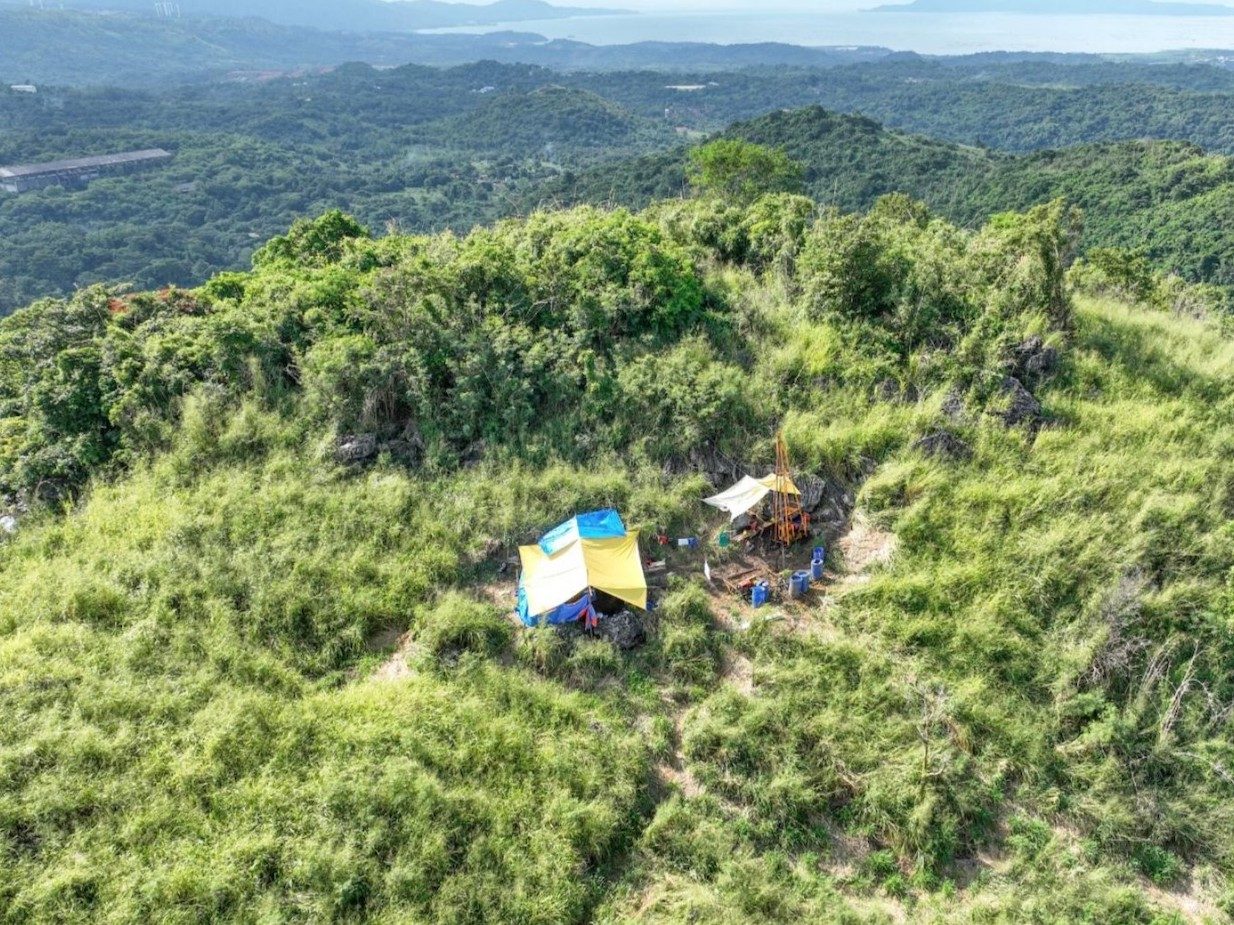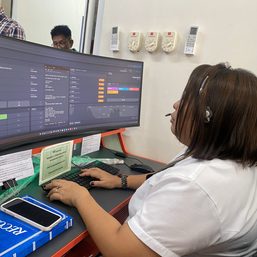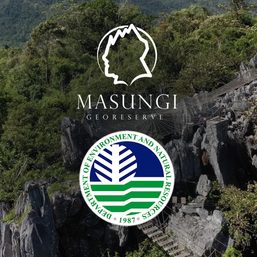SUMMARY
This is AI generated summarization, which may have errors. For context, always refer to the full article.

MANILA, Philippines – A drone video footage revealed some drilling operations for an ongoing wind farm project within the limestone formations of the Masungi Karst Conservation Area, the sanctuary’s managing foundation revealed.
The Masungi Georeserve Foundation Incorporated (MGFI) said on February 12, its team captured the operations for the construction of 12 wind turbines by a local energy company within the Tanay town side of the sanctuary in a drone surveillance in November 2023.
MGFI co-founder Billie Dumaliang told Rappler that it was the first time they discovered drilling activities in the georeserve, especially since their drone operations in remote areas usually uncover tree-cutting operations and forest fires.
“We saw drilling rigs; we saw construction people; we saw some equipment, and even temporary structures. It’s the first time that we saw that kind of intrusion into the wildlife sanctuary,” she said.
Dumaliang said their surveillance caught a project banner showing Rizal Wind Energy Corporation (RWEC) as the proponent of the ongoing wind farm project.

Documents obtained by Rappler show that RWEC is wholly owned by 7 Balboa Energy Holdings Inc., a Filipino company based in Makati. Vena Energy, a Singapore-based energy developer, has a 25% stake in the company behind RWEC, while the rest of the shares are owned by a company called 6 Balboa, which shares the same address as 7 Balboa.
Following their discovery, Dumaliang said they twice met with representatives of Vena Energy to express their opposition to their operations. Still the company said the project is already at an “advanced pre-development stage” where they are preparing for commercialization.
“We were really surprised because we were not informed or consulted as big stakeholders in this area and conservationists, and supposedly partners of the DENR in this area,” she said.
The Masungi Karst conservation area is located within the national park, wildlife sanctuary, and game preserve situated in the provinces of Rizal, Quezon, Laguna, and Bulacan. It was declared in 1977 a national park, wildlife sanctuary and game preserve, and covered by the Expanded National Integrated Protected Area Systems (E-NIPAS) law.
This law calls for using the protected areas to align with the principles of biological diversity and sustainable development and prohibits commercial activities in the area without any clearance and permits from the DENR and Protected Area Management Board (PAMB).
The MGFI also pointed out that the discovered operation within Masungi is a “disturbing violation” of a 1993 order from the Department of Environment and Natural Resources (DENR), which closed Masungi from exploration, development, and exploitation activities.
‘Only for study’
Despite the ongoing operations, Vena Energy maintained that the ongoing project is part of a study for a potential wind energy farm in the area. Vena Energy said it has worked closely with government authorities and secured all necessary permits, including an environmental compliance certificate (ECC).
“We adhere to the applicable laws and regulations on environment and protected areas. In addition, we have halted drilling, soil testing and studies in the specified area since November 2023 following a meeting with representatives from the Masungi Georeserve Foundation,” Angela Tan, corporate communications group head of Vena Energy, told Rappler on February 16.
“We are dedicated to sustainable development in renewable energy, and we are actively working with stakeholders to achieve this shared goal,” she added.
But according to Dumaliang, a copy of the company’s ECC for its supposed study was not presented during their previous meetings, while the MGFI’s team discovered that personnel of Vena Energy were still inside the conservation area as of last week.
“If there are permits already issued, they should be revoked based on the lack of consultation of key stakeholders as well as established scientific grounds. Again, as a renewable energy player, their due diligence should go beyond mere compliance but into the broader Environment, Social, and Governance impacts (ESG),” she said.
Despite the pause of activities within the areas inside Masungi, Dumaliang also insisted that the continuing construction of the wind farm project is the main issue at hand as she said that the companies “still want to do more drilling, more construction, more destruction.”
“The public should not rest until RWEC relocates the site of the wind farm away from Masungi,” she added, with their call to action to cancel the permits issued and stop the applications for projects in the sanctuary. – Rappler.com
Lance Arevada is a campus journalist at the Ateneo de Manila University. The Managing Editor of Matanglawin Ateneo, he is also an Aries Rufo Journalism fellow of Rappler for 2023-2024.
Add a comment
How does this make you feel?










There are no comments yet. Add your comment to start the conversation.